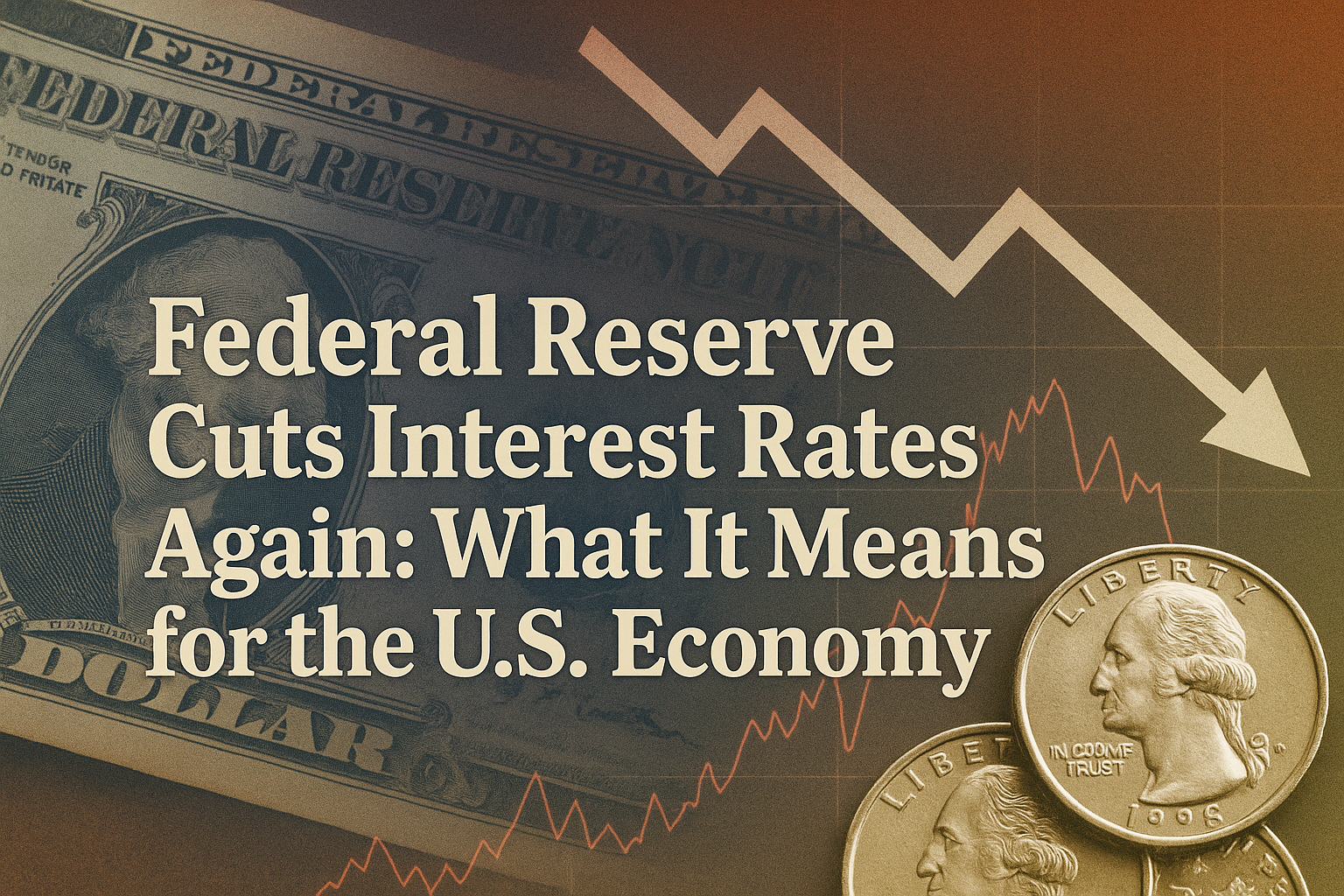The Federal Reserve’s decision on October 29, 2025, to lower its benchmark interest rate to 3.75 %–4.00 % marks another shift in monetary policy as officials balance slowing job growth against persistent inflation. This is the second rate cut of the year and a clear signal that the Fed is prioritizing economic support over continued tightening.
Here’s what’s driving the move—and what it means for borrowers, savers, and the broader economy.
Why the Federal Reserve Cut Rates
Labor Market Concerns
Though unemployment remains low, job growth has weakened in recent months. The Fed noted that “job gains have slowed,” while layoffs have picked up in sectors like tech and retail.
Inflation and Growth Balance
Inflation remains above the 2 % target, but with price pressures easing and growth cooling, the Fed appears more concerned about preventing an economic downturn than fighting residual inflation.
Monetary Policy Reset
The Fed also announced plans to slow its balance sheet reduction in December, a move that complements the rate cut and indicates a broader shift to a more accommodative stance.
How the Rate Cut Affects You
Borrowers Benefit
Lower interest rates generally mean reduced borrowing costs for credit cards, auto loans, and variable-rate mortgages. Consumers carrying high-interest debt could see some relief.
Mortgage and Housing Market
Mortgage rates may ease slightly, though they depend more on long-term bond yields than the Fed’s short-term rate. Homebuyers should monitor the market for potential dips.
Savers Face Lower Yields
Savings accounts and CDs may offer lower returns as banks adjust deposit rates downward. Retirees and others who rely on interest income could be impacted.
Business Investment
Lower rates can encourage companies to borrow for expansion, refinancing, or hiring. However, if demand remains weak, businesses may remain cautious.
Financial Markets
Equity markets often react positively to rate cuts due to cheaper financing and improved growth prospects, but lower rates can also compress bank profit margins and fuel risk-taking.
Broader Economic Implications
- Economic Stimulus: Cheaper credit can support growth and prevent a sharper slowdown.
- Inflation Risks: Looser policy may reignite inflation if demand recovers faster than supply.
- Financial Stability: Lower rates can ease borrower stress but may also increase leverage or speculative investment.
- Uneven Benefits: Borrowers and equity investors gain the most, while savers and fixed-income investors may see reduced returns.
Key Takeaways
- Borrowers should consider refinancing or locking in lower rates.
- Savers should compare financial institutions for the best yields or consider alternatives like short-term bonds.
- Homebuyers may want to watch mortgage movements closely before committing.
- Investors could benefit from a lower-rate environment but should stay alert for inflation-driven volatility.
FAQ
Q: Why did the Fed cut rates now?
A: The Fed is responding to slowing job growth and softening demand while inflation continues to trend downward but remains above target.
Q: Will mortgage rates fall?
A: Possibly, but not immediately. Mortgage rates track long-term yields, which respond to broader market expectations rather than the Fed’s short-term rate alone.
Q: Is inflation under control?
A: Not fully. The Fed acknowledges progress but remains cautious about declaring victory.
Q: What should consumers do now?
A: Borrowers may benefit from refinancing; savers should shop around for competitive yields; investors should remain diversified.
Sources
- Federal Reserve Interest Rate Decision – Fox Business (Oct 29, 2025)
- Federal Reserve Meeting Summary – CBS News (Oct 29, 2025)
- Labor Market Softening Report – Reuters (Oct 29, 2025)
- Fed Policy Adjustment – Financial Times (Oct 29, 2025)
- Consumer Rate Impacts – ConsumerAffairs (Sept 2025)
- Mortgage Rate Reactions – CBS News (Sept 2025)
- Fed Balance Sheet Plans – Reuters (Oct 29, 2025)
- Fed Rate Path Outlook – U.S. Bank (Oct 2025)

